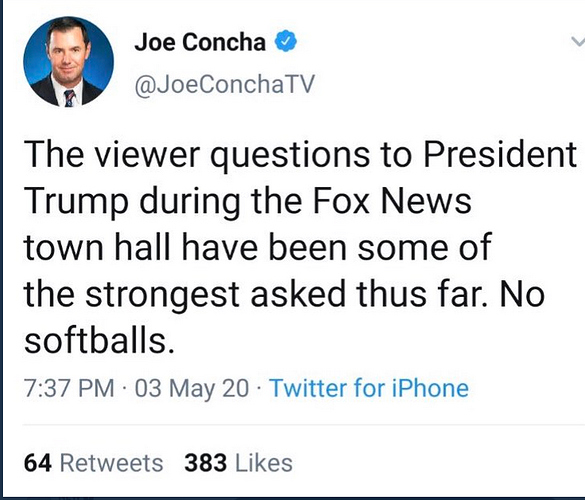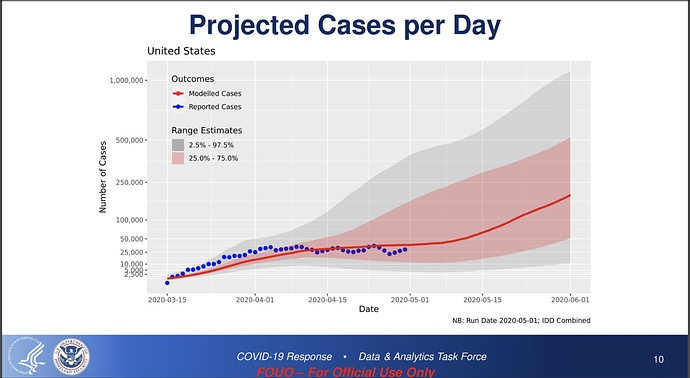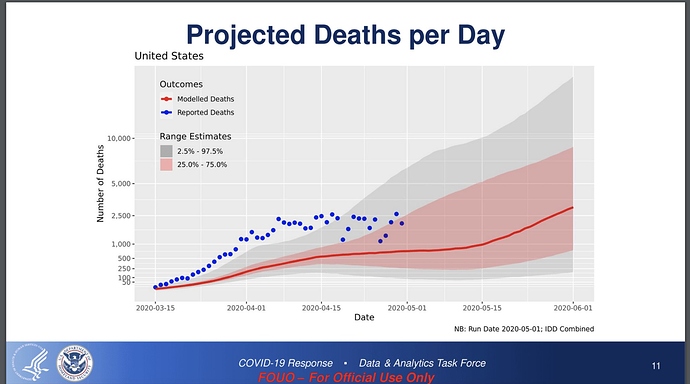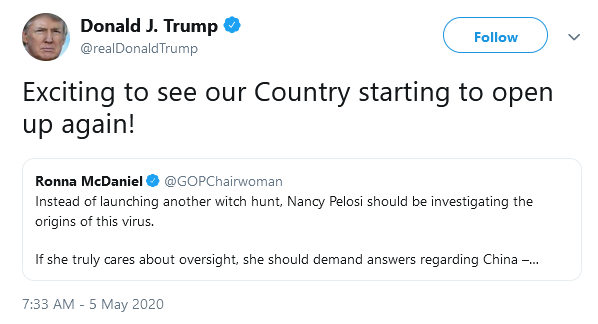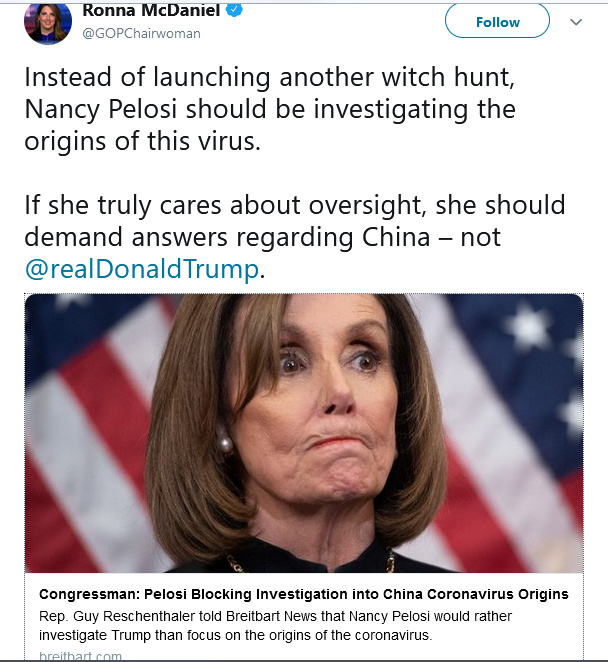There are a lot of murmurings of where is the CDC in all this. Dr. Redfield (CDC head) has been sidelined it seems…and this is an explosive report from within the ranks of the CDC which clearly says that US was behind in the response.
It does all come down to messaging…and I am remembering hearing how internal WH memos wanted all messaging re: Coronavirus to be not ‘alarmist.’
CDC’s response to the pandemic outbreak
The U.S. government was slow to understand how much coronavirus was spreading from Europe, which helped drive the acceleration of outbreaks across the nation, a top health official said Friday.
Limited testing and delayed travel alerts for areas outside China contributed to the jump in U.S. cases starting in late February, said Dr. Anne Schuchat, the No. 2 official at the U.S. Centers for Disease Control and Prevention.
“We clearly didn’t recognize the full importations that were happening,” Schuchat told The Associated Press.
The coronavirus was first reported late last year in China, the initial epicenter of the global pandemic. But the U.S. has since become the hardest-hit nation, with about a third of the world’s reported cases and more than a quarter of the deaths.
The CDC on Friday published an article, authored by Schuchat, that looked back on the U.S. response, recapping some of the major decisions and events of the last few months. It suggests the nation’s top public health agency missed opportunities to slow the spread. Some public health experts saw it as important assessment by one of the nation’s most respected public health doctors.
The CDC is responsible for the recognition, tracking and prevention of just such a disease. But the agency has had a low profile during this pandemic, with White House officials controlling communications and leading most press briefings.
“The degree to which CDC’s public presence has been so diminished … is one of the most striking and frankly puzzling aspects of the federal government’s response,” said Jason Schwartz, assistant professor of health policy at the Yale School of Public Health.
President Donald Trump has repeatedly celebrated a federal decision, announced on Jan. 31, to stop entry into the U.S. of any foreign nationals who had traveled to China in the previous 14 days. That took effect Feb. 2. China had imposed its own travel restrictions earlier, and travel out of its outbreak areas did indeed drop dramatically.
But in her article, Schuchat noted that nearly 2 million travelers arrived in the U.S. from Italy and other European countries during February. The U.S. government didn’t block travel from there until March 11.
“The extensive travel from Europe, once Europe was having outbreaks, really accelerated our importations and the rapid spread,” she told the AP. ”I think the timing of our travel alerts should have been earlier.”
She also noted in the article that more than 100 people who had been on nine separate Nile River cruises during February and early March had come to the U.S. and tested positive for the virus, nearly doubling the number of known U.S. cases at that time.
The article is carefully worded, but Schwartz saw it as a notable departure from the White House narrative.
“This report seems to challenge the idea that the China travel ban in late January was instrumental in changing the trajectory of this pandemic in the United States,” he said.
In the article, Schuchat also noted the explosive effect of some late February mass gatherings, including a scientific meeting in Boston, the Mardis Gras celebration in New Orleans and a funeral in Albany, Georgia. The gatherings spawned many cases, and led to decisions in mid-March to restrict crowds.
Asked about that during the interview, Schuchat said: “I think in retrospect, taking action earlier could have delayed further amplification (of the U.S. outbreak), or delayed the speed of it.”
But she also noted there was an evolving public understanding of just how bad things were, as well as a change in what kind of measures — including stay-at-home orders — people were willing to accept.
“I think that people’s willingness to accept the mitigation is unfortunately greater once they see the harm the virus can do,” she said. “There will be debates about should we have started much sooner, or did we go too far too fast.”
Schuchat’s article still leaves a lot of questions unanswered, said Dr. Howard Markel, a public health historian at the University of Michigan.
It doesn’t reveal what kind of proposals were made, and perhaps ignored, during the critical period before U.S. cases began to take off in late February, he said.
“I want to know … the conversations, the memos the presidential edicts,” said Markel, who’s written history books on past pandemics. “Because I still believe this did not need to be as bad as it turned out.”
And this plug for getting the CDC back… article by Dr. Ashish JHA Harvard Global health Institute Director


